 |  |
By Greg Niemann
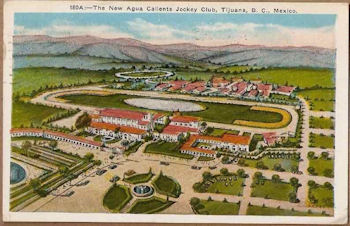
At first, it seemed the racing gods didn’t want Tijuana to have a racetrack. The original track, the Tijuana Jockey Club, was destroyed twice in its first year before John D. Spreckels who owned the Hotel del Coronado in San Diego stepped in to save it.
Financed by San Francisco boxing promoter James W. Coffroth, the Tijuana Jockey Club opened with a lot of publicity in January 1916, following Mexico’s 1915 decision to legalize gambling. Joining Coffroth was Baron Long, the owner of San Diego’s Hotel U.S. Grant. That initial track location was near the U.S./Mexico border and the six horse races on opening day drew 10,000 Californians who were denied betting legally on horse racing at home.
The San Diego Union at the time reported, "Surrounded by the mauve hills of old Mexico, as though nature intended the spot for the site, lies the magnificent new Tijuana race course, a few miles from the thriving little village."
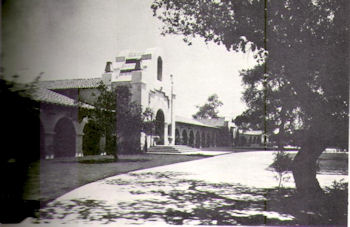
Its border location was also its downfall as it was built on the low ground of the Tijuana riverbed. The sparkling new facility was only one week old when the "nature that intended for the spot" included heavy rains and the worst flooding in 25 years which destroyed the track. To keep the momentum, they hastily rebuilt and reopened in April. But fortune still eluded them and that same season a fire ravaged the track. That’s when Speckels stepped in with financial aid; they reopened the Jockey Club the following year.
Over the next decade, prohibition in the U.S. had fun-seeking Americans flocking south to several newly opened Baja resorts and casinos. In 1928 American entrepreneurs built a beautiful casino and hotel at Aqua Caliente (hot water) on higher ground on the outskirts of Tijuana at a cost of $2.5 million. The following year, they added the Hipodromo Agua Caliente (Caliente Race Track) on the higher location, opening in late 1929. The horsemen from the Tijuana Jockey Club had moved up the hill.
Hollywood Celebrities Flocked to Caliente
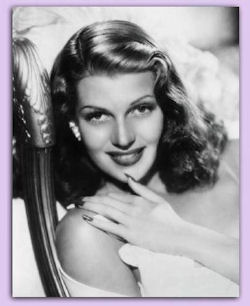
From the very beginning, Caliente attracted celebrities. Western cowboy Tom Mix was once an honorary field judge at the racetrack. World famous boxer Jack Dempsey, who went on to become one of the principals of the Riviera Resort and Casino in Ensenada, was also an honorary starter at Caliente. Charlie Chaplin, John Barrymore, Babe Ruth, Wallace Beery, Buster Keaton, Al Jolson, Constance Collier and Jean Harlow all visited Caliente during its heyday.
Guests were entertained in the lounge by the song and dance team of Rita Hayworth (Margarita Cansino) and her father who were billed as "The Cansinos." The daughter of Spanish dancer Eduardo Cansino and his Irish wife Volga Haworth, young Rita was eventually “discovered” in Baja by a Fox Studios executive. By the early 1940s she was a Hollywood star, featured in movies with the likes of Tyrone Power and James Cagney.
The publicity surrounding the Caliente Race Track and its predecessor, the Tijuana Jockey Club, helped attract top horses from the very beginning. In 1917, the Spreckels Handicap which offered a $4,000 purse to the winner honored the man who helped resurrect the track. It grew in value and prestige until 1930 when its name was changed and it became the Agua Caliente Handicap, the first in North America to offer a $100,000 purse.
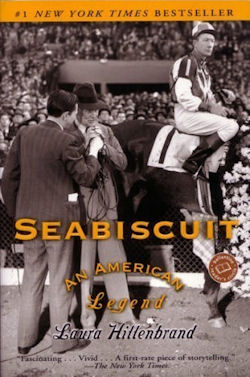
Horses were attracted from all over, including the eastern U.S. and abroad. The great Australian horse Phar Lap won the Agua Caliente Handicap in 1932, earning that richest purse in North America. In 1938 the indomitable Seabiscuit also won the Agua Caliente Handicap, as did the popular horse Round Table 20 years later.
Agua Caliente was the site of several industry firsts, including starting gates, safety helmets, and “pick six” wagering. Caliente’s famous 5-10 was the forerunner to many pick-six wagers and had big payoffs.
When Mexico outlawed gambling in 1935, the adjacent resort and casino were closed but the Agua Caliente Racetrack continued to operate for many years. The original grandstand structure was destroyed by fire in 1971, but was rebuilt.
One Baja legend concerns Kentucky Derby day at Caliente in 1974. It was long a tradition at Caliente to keep the betting windows open as long as possible to accommodate every possible bet. Well, that day one over-zealous clerk was still selling tickets on the Derby long after the winner, Cannonade, had crossed the finish line. A handful of lucky touts who appeared to have had a crystal ball have been telling their winning story for years.
In more recent decades, Caliente was important to the California thoroughbred racing community as lower training costs and lower purses made it economically feasible to test young horses in competition. It was a wonderful training ground for horses preparing to race elsewhere. Then the grooms decided to strike and while shut down, the track owners found Sports Book wagering to be extremely profitable, especially without the overhead of live thoroughbred racing. The track also went to the dogs, quite literally, as they discovered dog racing a much more economical pursuit.
By the early 1990s the active horse racing had closed down and was replaced by greyhound racing which has continued to this day. Many dogs break in at Caliente where there are 13 races every night and matinee races on weekends. Greyhound races: Monday to Friday from 7:45 p.m., and Saturday and Sunday from 2 p.m.
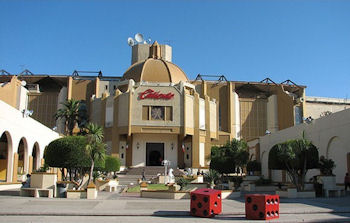
In addition to the greyhounds, the venerable Caliente Race Track, now called the Hipodrómo de Agua Caliente, is open to the Caliente Foreign Book wagering where closed circuit TV monitors offered a sports medley that should provide a fix for the most discriminating sports betting junky.
Caliente Sports Books can now be found in almost every town of any size in Baja California. There’s one in San Felipe, one in Rosarito Beach, and one in the San Nicolas Hotel in Ensenada. But the Agua Caliente racetrack itself has turned from an international gathering place into a shadow of its former self. Even part of the grounds have been put to a more practical and beneficial use than the glitter of yesteryear. There’s now a school housed at Caliente to help educate the children of Tijuana.
About Greg
Greg Niemann, a long-time Baja writer, is the author of Baja Fever, Baja Legends, Palm Springs Legends, Las Vegas Legends, and Big Brown: The Untold Story of UPS. Visit Greg's website.